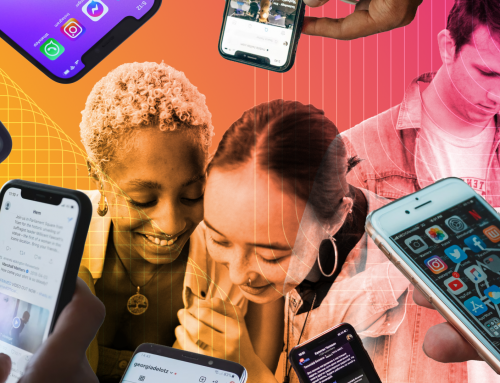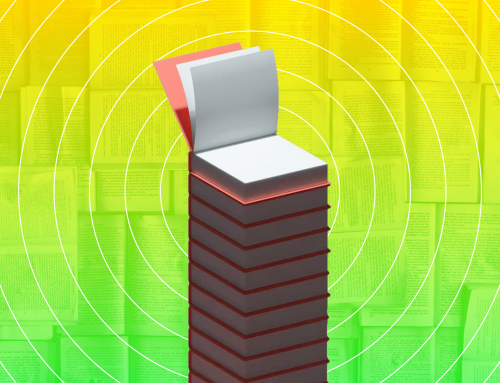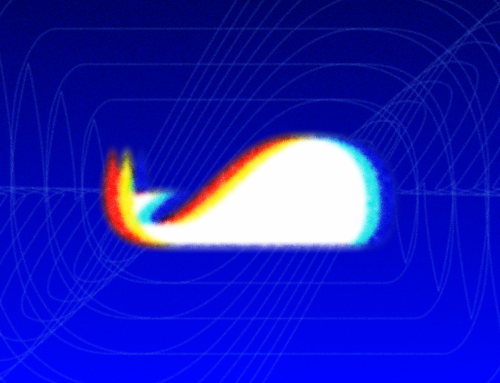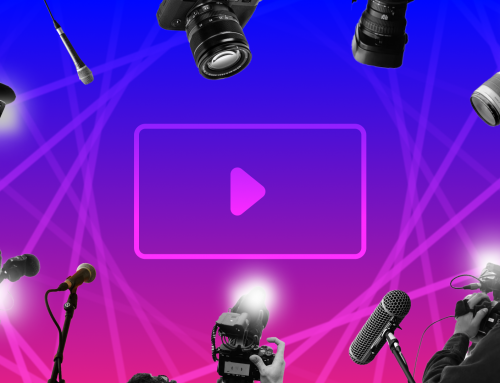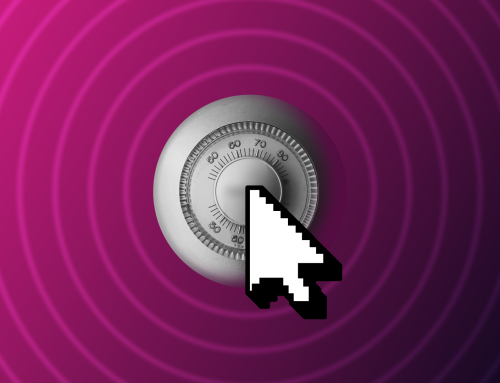Networks are made up of people
The cases that were examined in the first two chapters of Mind the Challenge would lead us to believe that social networks (and more generally the infrastructure that allows them to exist, namely the Internet) are tools that exclusively promote negative behavior. Yet, systematic disinformation, psychological manipulation and health risks for minors are very relevant in our offline lives, too. In this sense, technology mostly contributes to the issue by offering potentially unlimited exposure. This, for instance, inevitably has repercussions on the emulation phenomena that were analyzed in chapter 2.
This does not mean that social networks are neutral tools, as Canadian sociologist Marshall McLuhan explained it back in the mid-1960, when he coined the expression “the medium is the message”, meaning that the media can be identified with their way of structuring communication. Instead, it means that an individual user’s intentions are much more crucial in defining his communicative acts than the platform he uses to convey them. Therefore, if users, as human beings, can exploit the potential of the Internet to elaborate dangerous challenges and devious mystifying contents, the same digital tools can become a precious ally in much more noble causes.
Moving away from the topic of online challenges for a moment, this is what happened, for example, during the so-called “Arab Spring“, the series of protests and mobilizations that shook some regions of the Middle East and North Africa between 2010 and 2011, revolutionizing the geopolitical situation of the area to the point of leading to the dismantling of authoritarian regimes in Libya, Tunisia and Egypt. For a long time, those governments stifled dissent through a systematic repression of freedom of the press and of association. Yet, they were not prepared when, in the early 2010s, their citizens were finally able to circumvent censorship through Twitter and to organise meetups by creating a simple Facebook event.
One of the most significant episodes of those protests originated on social media. As an article in the New York Times recalls, on June 8th, 2010 Google employee Wael Ghonim, who was 29 at the time, came across a photo of the disfigured body of Khaled Mohamed Said, a peer who was beaten to death by the Egyptian police at an Internet café, as he was on Facebook. Moved by anger at that injustice, Ghonim created the Facebook page Kullena Khaled Said (meaning “We are all Khaled Said”): in just three months, the page reached 250,000 followers and led to the organization of “silent protests” in major Egyptian cities. One of those protests took place on January 25, 2011 in Tahrir Square, Cairo, and it is still recognized today as the spark that ignited the uprising of the Egyptian people, starting a chain of events that led to the resignation of President Hosni Mubarak.
From that moment on, the role of the Internet in the definition of political identities and in the dynamics of bottom-up activism became the subject of constant academic reflection. In the following decade the digital platforms would go on to give rise to numerous experiences of aggregation: just think of the Five Star Movement in Italy, the anti-austerity movement in Spain and the American parentheses of Occupy Wall Street and the American alt-right in support of Donald Trump. In short, the Internet has become capable of having extremely real consequences, directing the subjects of debate in the public opening and potentially leading to the overthrowing of governments and the election of new ones.
All this unrest has certainly not gone unnoticed in the eyes of the platforms which, by now, have in all respects become real social actors. These companies have growingly understood the importance of their historical function and have started to develop a communication that lives up to their new responsibilities, especially by focusing on solidarity.
The new face of social networks
On 15 December 2013 Facebook launched a “Donate now” button that users can use to allocate their donations to some charities selected by the company: initially, there were 19 of them, including the International Red Cross, UNICEF and the WWF. It was the first step towards the creation of an actual fundraising tool, introduced by Facebook in 2015, that managed to include over 750 thousand non-profit organisations.
By the end of 2016, Mark Zuckerberg’s company was in the business of building a small universe of solidarity, consisting of tools for the donation of food, high-profile philanthropic partnerships (including one with the Bill & Melinda Gates Foundation) and, finally, a “Safety check” notification to provide information on one’s wellbeing during natural disasters or terrorist attacks. In 2017, Facebook definitively deleted its 5 percent tax on charitable transactions, while announcing its plan to boost donations on users’ birthdays. To this day, Facebook still donates 5 euros for each fundraiser users organise on their birthdays.
All these efforts were later extended to Instagram, the other big platform managed by Meta, in 2019, and they have contributed to raising an impressive 5 billion dollars over the span of 5 years, donated by a total of 85 million users. Two of these billions were donated since the beginning of the pandemic alone. These numbers have turned Facebook into one of the emerging players in the global crowdfunding market, while allowing the company to collect large fees from big NGOs in exchange for sponsorships and advertisements.
In short, these acts of charity are not exactly selfless, but they did play a central role in the evolution of modern social networks, and they do show that the Internet is not exclusively characterised by negative dynamics better than any data could. Through the activation of tools designed to connect users to non-profit organizations, digital platforms managed to stimulate solidarity from the top down. Yet, as we previously mentioned, platforms are mostly made up of the sum of the people who spend their time on them, and the initiatives of solidarity launched by users on social networks in recent years deserve their own chapter.
When challenges do a lot of good
The Internet (and social networks) are not only a negative, but also a positive and stimulating place. Before getting to the heart of our story and discovering the positive challenges that have involved millions of users in recent years, let’s briefly leave the floor to Letizia Atti, a pedagogist and digital educator. Here, Atti explains what advantages the Internet offers young people today:
Therefore, the Internet stands out as a training ground for getting to know and challenging oneself. Furthermore, several studies agree that understanding new technologies and knowing how to make the most of them are central to the growth of new generations that are increasingly forming a conscious relationship with the online world and are able to reap its benefits. Knowing that the future will be increasingly digital, Atti illustrates precisely why the Internet is (also) good for teenagers:
If used correctly, the Internet and social networks can be a tool for young people to challenge themselves, and play an important role in their relationship with themselves and others. The desire for challenge that naturally accompanies the growth of teenagers must therefore not be interpreted in an exclusively negative light: when channelled positively, it holds a real opportunity for growth and understanding. As Atti recalls, challenges are not dangerous in themselves – they only become risky if they’re channelled incorrectly.
In this context, what role do positive challenges play?
As Atti highlights, charity-oriented challenges with a fundraising goal or those that aim to raise public awareness on a specific issue more generally fall under the category of positive challenges. We will shortly discuss the Ice Bucket Challenge that Atti mentions and that many will probably be familiar with. But first, let’s review some other examples of positive challenges, in order to understand the extent and variety of the phenomenon. Let’s start from the Trash challenge, also mentioned by Atti.
Born in 2015, the Trash challenge is directly linked to an initiative launched by a company called Uco, the #TrashTag project, based on an idea by Steven Reinhold, who was responsible for the brand at the time. As Reinhold was traveling in California with a friend, a ticket flew out of their window: that moment inspired the desire to collect at least a hundred pieces of junk along their trip, capturing the moment with a snapshot and publishing the photo on social media under the #TrashTag hashtag in order to promote environmental cleanliness and a renewed attention to waste separation.
The initiative then turned into a real challenge addressed to teenagers in 2019, when it landed on Facebook as a provocation towards the very young. It was an unexpected success, exceeding 337 thousand shares and leading to the birth of a phenomenon that was not only social, but also educational and focused on respect towards the Earth. Over the years, social networks have been inundated with photos of beaches, parks, streets and public places that were cleaned up by the young people who spend time there.
Visualizza questo post su Instagram
Can your team everrrrrrrrrrrrr???😘
And yes, that’s us striking the #WorldWithoutWaste pose. We went to Kuje, we saw & we conquered.#ProudTrashHater#KujeCleanUp#TrashChallenge#InnovativeVolunteerism#TrashFreeNigeria#AbujaTwitterCommunity pic.twitter.com/ZoHZoTPSeB
— Adesuwa Obasuyi (@adesuwagreen) May 4, 2019
The Mannequin challenge was also a positive trend. It was launched with the aim of entertaining viewers by showing one or more people stop suddenly as they were carrying out their daily lives, it turned into a tool of denunciation in November 2016, when actress Simone Shepherd published a video on her Instagram profile that respected the Mannequin challenge rules while also raising public awareness on the Black Lives Matter movement. The challenge was also used to further positive discussions on teamwork and the importance of relationships with others, since at least two people are necessary to make these videos. A famous Filipino tv program, It’s Showtime, even made headlines when it involved everyone in the studio, including the public, in their own rendition of the challenge.
The 100 Happy Days challenge (or the shorter 7 Days Gratitude Challenge) is another example of a challenge that is good for oneself and others. As can be guessed by the names, the challenge asks users to share something that made them happy that day on their profiles. This kind of challenges can have a positive effect on the participants’ mood. This list (which is by no means exhaustive) also includes challenges that involve pets: the Snoot challenge, for instance, asked dog owners to post videos or photos of the animals fitting their snoot into a circle they had made with their hands. As well as being fun, the gesture is also useful to get animals used to wearing muzzles or special post-operation collars.
Playing and testing others
Positive challenges don’t necessarily have to include fundraising efforts for noble causes or the commitment to a common ideal. The category also includes the countless challenges that invite you to test yourself with individual or group dances. There are plenty of examples, from the Renegade Dance to the Sweatshirt Dance. Sometimes, “dancing” challenges also ended up involving entire families, as in the case of the Blinding lights challenge, asking users to dance with their parents or grandparents.
As we saw in the first chapter, challenges can be distinguished from other online content because they invite users to perform an action that can be related to their daily activities, including cooking. Culinary challenges are their own specific and prolific genre: from the Hot chocolate bomb challenge – where users challenged each other to try a delicious (and caloric!) chocolate-based recipe – to the Lemon Face challenge, where users recorded themselves while eating a slice of lemon to support the fight against brain tumor in children.
There are plenty of positive (and harmless) challenges that have spread over the years. In all these cases, the participants were asked to do something (like cleaning, playing, or cooking) or not do anything (like standing still like mannequins). But in at least one case, one challenge achieved something much more ambitious than virality: it’s the case of the Ice Bucket challenge.
The Ice Bucket Challenge case
The Ice Bucket challenge is the most famous example of positive social challenges so far. The challenge was launched in the summer of 2014 in the United States of America for charity reasons, and it soon went viral all over the world, involving everyone from ordinary citizens to singers, actors, sportsmen, politicians and other celebrities.
How did the challenge work? It was very simple: users posted videos on their social profiles alongside the hashtag #IceBucketChallenge. In the videos, users poured a bucket of water and ice over their head, asking other people to take part in the challenge within 24 hours. The aim was to raise money for amyotrophic lateral sclerosis (ALS), helping to fund scientific research. ALS is a rare disease caused by an atrophic process that affects elements of the voluntary motility system, causing progressive muscle paralysis that involves the ability to move, speak, swallow and breathe.
After publishing the video on their social profiles, each American user could choose to donate any amount to the ALS Association, a US non-profit organization founded in 1985 and engaged in research on ALS. As the challenge spread outside of the country and became viral globally, various charity entities became involved. According to a study by Johns Hopkins University, the challenge raised a total of over 220 million dollars worldwide, directly contributing to the enhancement of funds destined for research and scientific progress.
It is interesting to understand how this awareness campaign was born and what dynamics made it so successful. As reconstructed by Time, at the beginning the challenge had nothing to do with fundraising for ALS research. In July 2014, “Chris Kennedy, a golfer in Sarasota, Fla., was nominated by a friend to participate in the Ice Bucket Challenge, which at the time, had nothing to do with ALS. The campaign was not tied to any specific charity, and participants would select a charity of their choice for donations. Kennedy’s friend had selected a charity that benefits a young child with cancer in the area”. Yet, ASL was mentioned for the first time in Kennedy’s post: in the video, the man mentioned that his wife’s cousin’s husband was affected by the disease, and called for his relative, Jeanette Senerchia, to try the challenge. Senerchia accepted, publishing the ice-bucket video on her Facebook profile and tagging other people. By then, the challenge was tied to ALS fundraising, and it started spreading like wildfire until it reached Pat Quinn, a man with ASL from Yonkers, a municipality located in the State of New York. Through Quinn, the challenge reached Pete Frates, former captain of the Boston College baseball team, who had been diagnosed with ALS at the age of 27.
It is with Frates that the challenge obtained national attention. After the publication of Frates’ video on his Facebook profile on July 31, 2014, the campaign took off, going viral. The former sportsman, who lived in Boston at the time and would later die at the age of 34, in 2019, from the disease, had a large network of supporters and he was an important part of the ALS community. As explained in an article by National Public Radio (NPR), Frates involved high-profile participants in the social challenge, including New England Patriots star Tom Brady and Red Sox owner John Henry: Before long, celebrities like George W. Bush, Oprah Winfrey, Lady Gaga, Bill Gates and Steven Spielberg were making their own Ice Bucket Challenge videos throughout the summer of 2014”. “What started out as a small gesture to put a smile on Anthony’s face and bring some awareness to this terrible disease has turned into a national phenomenon and it is something we never could have dreamed of,” Chris Kennedy said in an interview.
From the United States the challenge then spread via social networks all over the world, reaching Australia, New Zealand, Canada, Mexico, Brazil, Germany, Philippines, Puerto Rico, India and Italy. According to data provided by Facebook in September 2014, between June 1 and September 1, over 17 million Ice bucket challenge-themed videos were shared on the social network. They were viewed more than 10 billion times by over 440 million people. In the same period, 3.7 million videos were uploaded on Instagram with the hashtags #ALSicebucketchallenge and #icebucketchallenge. Pop singer Justin Bieber’s was the most popular. The challenge also received great attention on Youtube: Ice bucket challenge-themed contents were viewed overall more than 43.5 million times, with 24,357 different videos uploaded to the platform. The Ice bucket challenge was among the most searched terms on Google globally in 2014.
Online and scientific success
The challenge’s global diffusion also had a strong economic impact on donations to organizations carrying out research on ALS. At the time, the ALS association announced that it had received, between 29 July and 18 August 2014, as much as 15.6 million dollars in donations, compared to 1.8 million dollars in the same period of the previous year. The same thing happened to other associations operating in the same field in the countries where the challenge spread, raising public awareness on the issue.
The Motor neurone disease association – the British equivalent of the Als association – received 2.7 million pounds from 22 to 29 August 2014: before the Ice bucket challenge, it received an average of 200 thousand pounds a week in donations. In Italy, the Italian Amyotrophic Lateral Sclerosis Association (Aisla) said that “thousands of Italians participated in the initiative by donating a total of 2 million and 400 thousand euros” which were used “to finance research on the ALS and to support and assist the about 6.000 people who face this disease every day”.
These new and huge resources also had an impact on the results of scientific research. According to the ASL Association, the researchers used funding for new clinical trials to test potential treatments. The association “committed nearly $90 million around the world in research funding between 2014 and 2018, including $81.2 million across 275 research grants in the United States and an additional $8.5 million internationally. The Association also used Ice Bucket Challenge money to invest in more researchers, expanding the network of scientists working to develop treatments and a cure. From 2014 to 2018, The ALS Association awarded 322 grants to 237 different scientists for ALS research”. Hemali Phatnani, director of the Center for Genomics of Neurodegenerative Disease at the New York Genome Center, said that “the Ice Bucket Challenge has been transformative in the field of ALS genomics. We built one of the largest resources of ALS whole genome-sequencing data. This resource has been shared with partners all over the world. It has accelerated the pace of ALS gene discovery and has led to the largest ALS sequencing study in the United States”.
In 2016, thanks to the resources obtained through the Ice bucket challenge, it was possible to finance an important scientific discovery related to ALS: scientists identified a new gene (Nek1), considered to be one of the most common among those contributing to familial amyotrophic lateral sclerosis. The research, published in Nature Genetics, has been hailed by the media as the largest study ever conducted on hereditary ALS. The identification of the Nek1 gene has allowed scientists to develop gene therapy for a cure.
“Global collaboration among scientists, which was really made possible by ALS Ice Bucket Challenge donations, led to this important discovery”, said John Landers of the University of Massachusetts Medical School. Alongside Jan Veldink of the University Medical Center of Utrecht, Landers conducted a study involving more than 80 researchers in eleven countries.
In conclusion, the Ice bucket challenge was born as a social media trend, but it led to decisive steps towards understanding one of the most enigmatic and rare diseases in circulation. These results are extremely real: they crossed social network boundaries, reaching into our lives straight from the online world. In a positive way, this time around.


